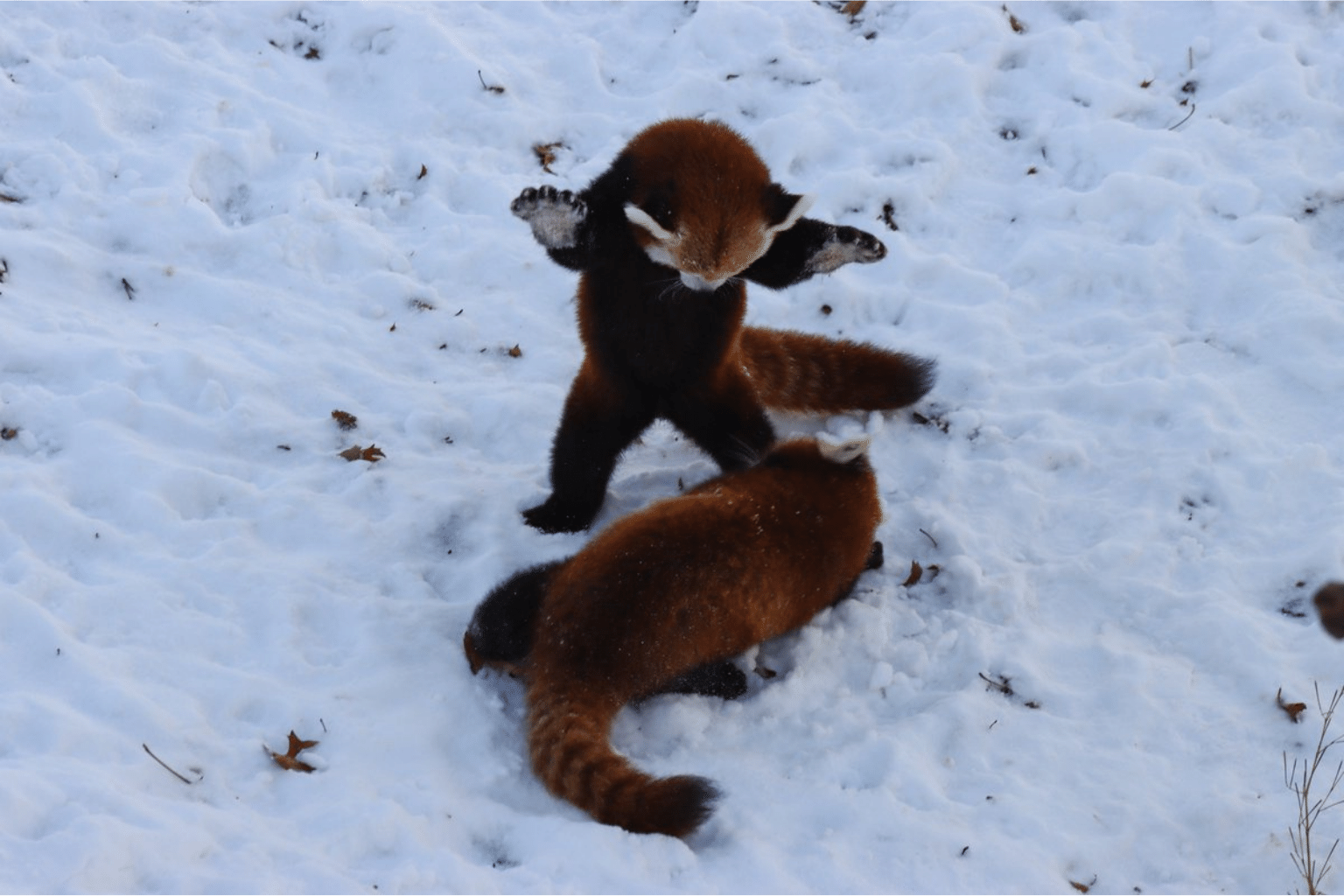We're in the final weeks of winter in the Northern Hemisphere. Red pandas may not be too happy about it.
If you’re reading this article, odds are that you’re a human (and if not, congrats on learning how to read, member of another species). One of the most interesting things about humans, and primates in general, is that we have adapted the ability to use tools and don clothing to survive harsh temperatures. However, this is not true of wild red pandas, who can face temperatures of -7 degrees C during a winter night. Fortunately, red pandas have some incredible and unique adaptations that help them survive the harsh winter weather they face!
Red pandas have a thick double-layer of fur. Much like humans who put on a sweatshirt followed by a winter coat, red pandas also use layers to stay warm! There is an incredibly dense undercoat of fur that is topped by an upper coat of thick hair. The two combine to create a lot of insulation for pandas, helping them fight off cold temperatures and even helping keep snow from reaching their skin. Also, the entire panda body is covered in fur except for their noses — even the bottoms of their feet!
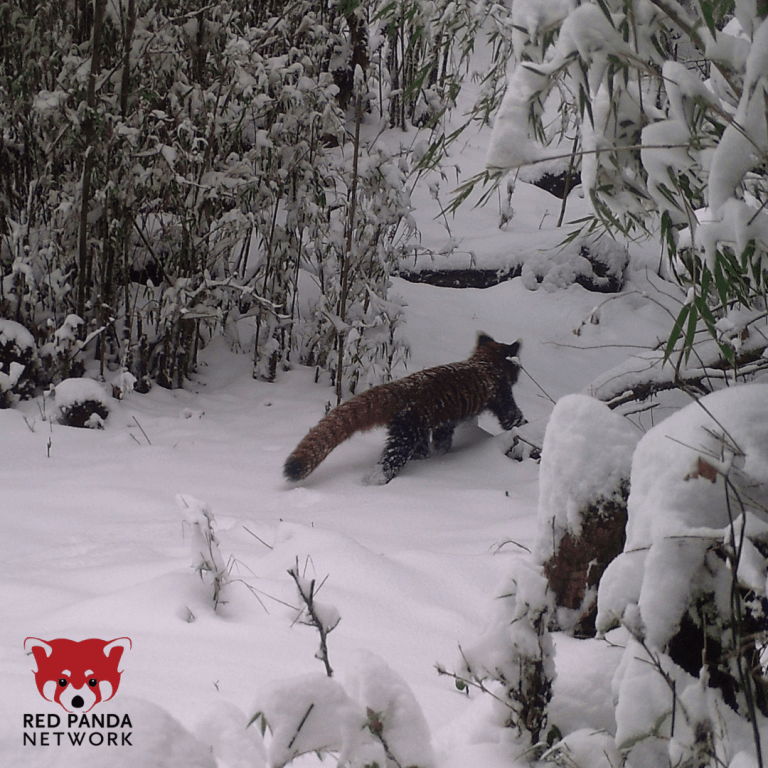
Wild red panda in the snow in Nepal. ©RPN
Speaking of fur: babies are born with a full coat of fur, ready to face what the Himalayas throw at them from the start! That’s not all young pandas have going for them! Red pandas have evolved a trait known as delayed implantation. After mating takes place (usually between January and March), the fertilized egg will not implant in the uterus and begin developing until conditions are ideal; meaning that if mating takes place too early, the zygote will not start to grow until later in the season, ensuring cubs won’t be born in the harshest part of winter.
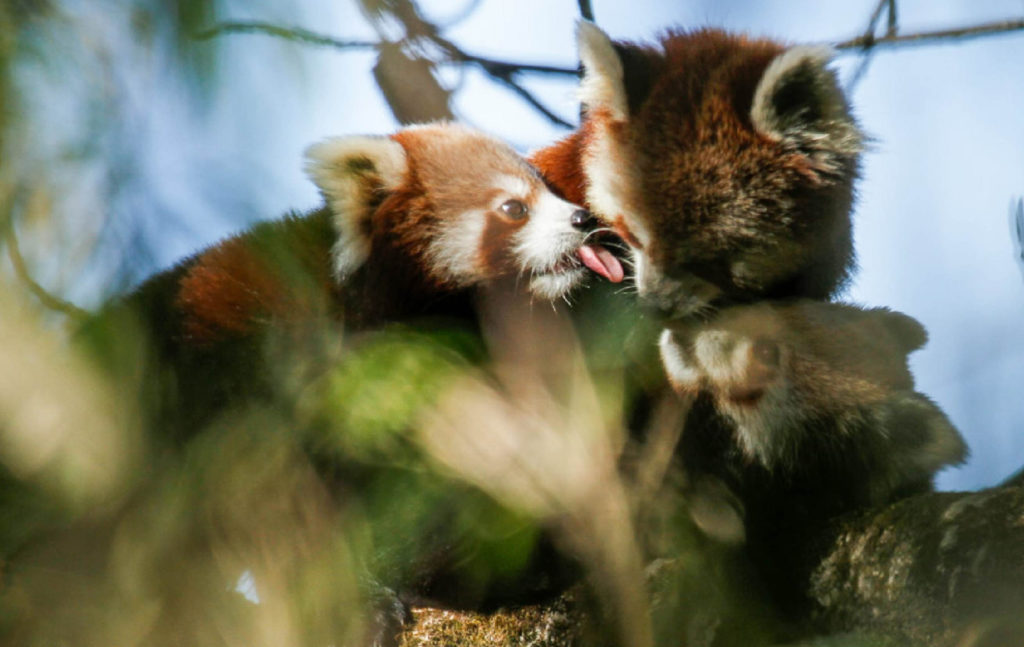
Red panda mother with cubs in PIT Red Panda Protected Forest. © Axel Gebauer
That adorable fluffy tail we all love so much is also an adaptation that helps in the winter. When pandas sleep, they are able to curl into a tight ball, and wrap their tail around themselves as an extra layer of protection from the elements. Pandas can wrap up incredibly well, including hiding their face under their tail if they are extremely cold. This form of thermal regulation is something pandas control extremely well, wrapping up tighter or looser as the elements demand.
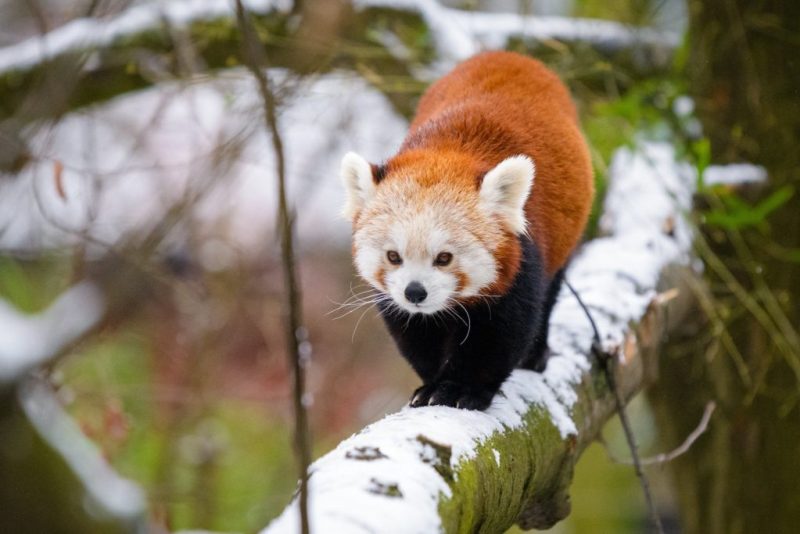
© Mathias Appel
As you probably already know, red pandas exist almost exclusively on a diet of bamboo; but it is often augmented with insects, lizards, small birds and mammals, fruits, and eggs. However, in the winter, most of these options disappear, leaving the panda with bamboo as the sole source of food. Pandas will often spend half their day gathering enough bamboo to eat during these lean times, and sleeping the rest of the day.
During the lean winter months, when food is scarce and diets are less varied, red pandas are able to slow their metabolisms down significantly. This low metabolic output allows pandas to not have to hibernate or migrate in the winter months. When the weather gets incredibly cold, pandas can slow their metabolic rate even further, similar to that of a sloth. During this time, the panda will become dormant — barely moving at all — while using its stored energy to keep its body temperature consistent.
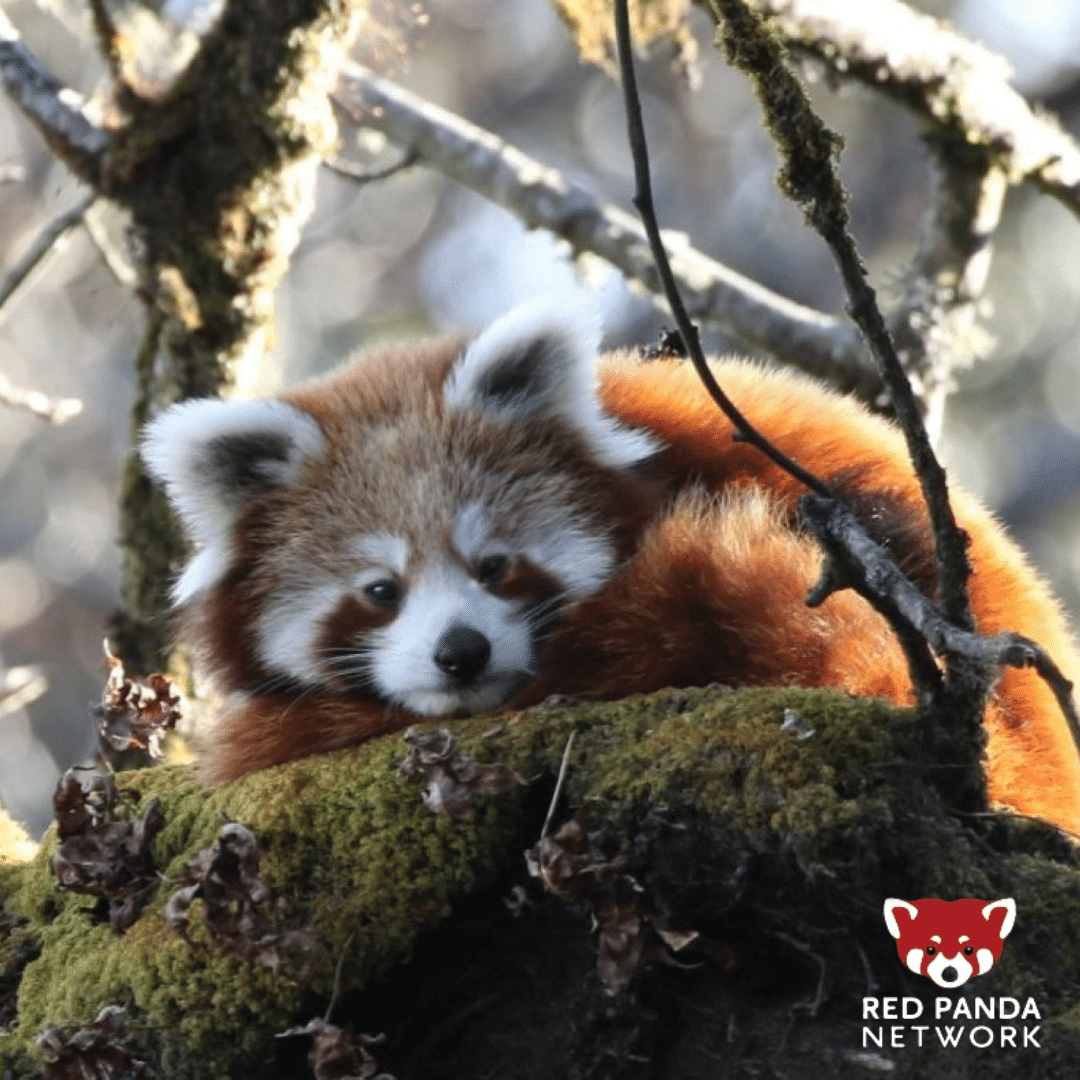
WIld red panda keeping warm in eastern Nepal. © RPN
Of course, we all know that red pandas are an arboreal species, with many adaptations that help them climb trees and live life high above the forest floor. But did you know that actually helps them in the winter as well? On clear winter days, red pandas will climb to the top of the trees to sunbathe! Thus, all of the adaptations pandas have for climbing and gripping such as the furry bottoms of their feet, pseudo-thumbs and retractable claws, and their rotating wrist bones that allow for climbing up or down headfirst...those adaptations all also help red pandas survive in snowy weather!
As you can tell, there are many reasons why red pandas are so perfectly adapted for the harsh winters they face in Nepal. However, some of these traits are also amongst the reasons red pandas are considered so valuable in the illegal wildlife trade. Hats made of those warm tails, or clothing made of the warm double layer of fur that is so necessary to keep pandas alive are considered extremely desirable in certain areas of the world. That is why it is so important to continue our mission to stop poaching and to educate people on the importance of this incredible species.
Thank you John Ball Zoo for the footage of red pandas playing in the snow (in the video above)! Learn more red panda facts and about our No Panda Poaching campaign.
Jon Rossi and Christina Barba
Writing and Communications Volunteers
Red Panda Network

